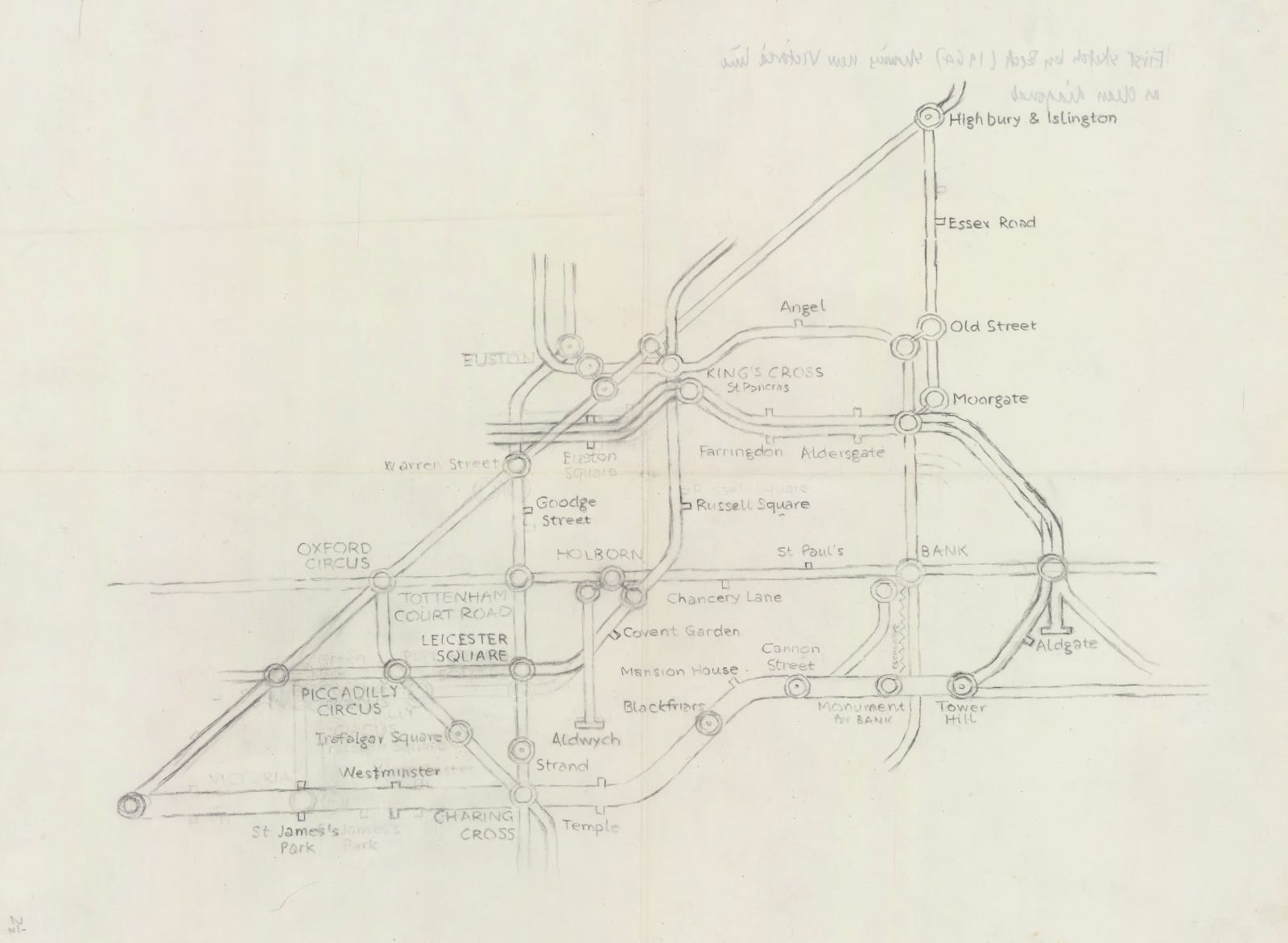Harry Beck
37 x 50 cm
Harry Beck had served as the chief designer for the London Underground map since 1933 when his revolutionary schematic design was first introduced to the public. With only a brief interlude from 1937 to 1941, Beck retained control of the design until 1960 when he was unceremoniously, and without warning, told by London Transport that his services would no longer be required. Another member of London Transport's Publicity Department, Harold Hutchison, took it upon himself to produce a new Underground map in 1960, without consulting Beck and without following many of the key tenets of Beck's design. The Hutchison design, much derided at the time and since, was felt to be a poor replacement with its harsh angles and inelegant zig-zagging lines.
Beck clearly saw that the arrival of the Victoria Line offered an opportunity to correct the errors of the Hutchison design, but only if he could win over the London Transport Publicity Department. After working for months to incorporate the new line, Beck submitted two Quad Royal posters for approval on 29 November 1961. On those maps, the Victoria Line is portrayed in lilac, a colour which was ultimately abandoned as it was too difficult to print consistently.
Regrettably, both Quad Royal posters were returned to Harry Beck less than two weeks later without comments. It is possible that his designs were barely examined at all. His elegant solution for the Victoria Line was never adopted with London Transport instead opting for an awkward, twisting line instead. The following year, London Transport sent Harry Beck a dismissive letter in which they stated:
"If at any time London Transport decides to use your map again, nobody but yourself will be commissioned to alter it and bring it up to date. The map now in use is of another design, and this is the one on which London Transport intends to show the Victoria Line and any other future additions to the Underground System."
Undeterred, Beck continued sketching new designs throughout the 1960s, but was never again consulted by London Transport. When Harold Hutchison was eventually replaced by a more sympathetic designer, Paul Garbutt, in 1963, Beck tried again to incorporate his diagonal Victoria Line, but his appeals were once again ignored. Legal action was threatened on both sides to no avail.
A note on this back of this sketch map, written by Ken Garland, Harry Beck's friend and biographer, labels this as a "First sketch by Beck (1964) showing new Victoria Line as clean diagonal". With the exception of the diagonal Victoria Line, this sketch bears little resemblance to the two posters Beck submitted in 1961, nor does it resemble another unused diagram submitted by Beck in 1964. The layout sits somewhere in between the 1961 and 1964 submissions, making it a unique design.
The shape of the eastern end of the Circle line which resembles the neck of a bottle was introduced by Paul Garbutt on his 1964 replacement for Harold Hutchison's much-derided map. Beck has slightly modified Garbutt's bottle shape, instead opting for a raised bend of the Circle & Metropolitan Lines at King's Cross before dipping back down at Euston. This hump was necessary to achieve the diagonal Victoria Line that Beck wanted, but is far from an elegant solution. It also appears on the 1964 poster he submitted to London Transport but was never formally adopted. Beck has also adopted Garbutt's ingenious use of circles with dots in the middle to indicate stations with a British Railways interchange. This shows that Beck was not closed off to the ideas of others, only to those ideas he felt compromised the tidiness of his design.
The frequent erasing and moving of names and stations on this sketch is rarely seen on other surviving Beck manuscript maps as most other surviving copies were formal proofs submitted for approval to London Transport. This wholly unfinished sketch is so clearly only for his own personal use and it provides a fascinating insight into Beck's thinking and his design process.
Provenance: Ken Garland's personal collection given to him by Harry Beck.





